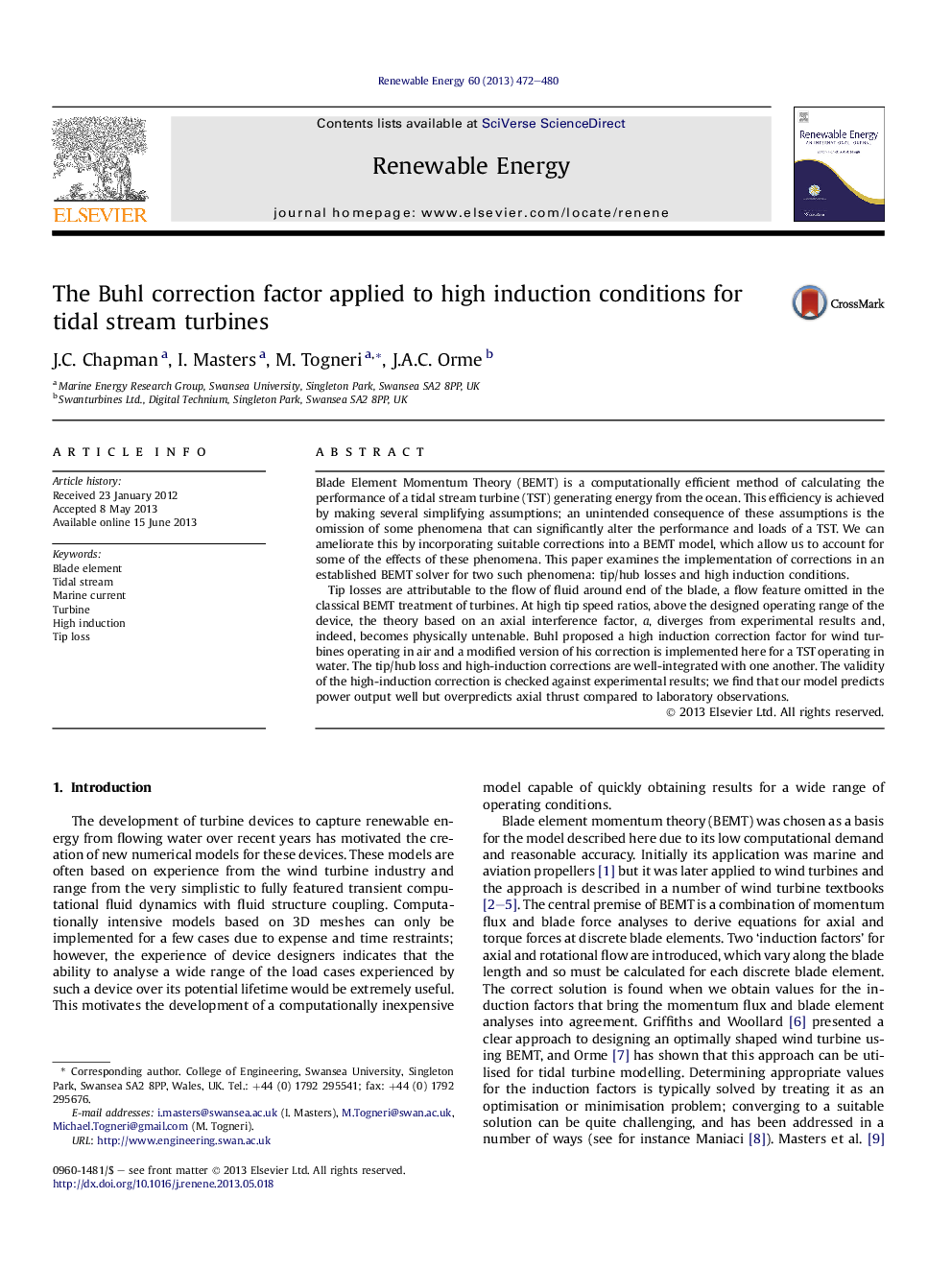| Article ID | Journal | Published Year | Pages | File Type |
|---|---|---|---|---|
| 6769355 | Renewable Energy | 2013 | 9 Pages |
Abstract
Tip losses are attributable to the flow of fluid around end of the blade, a flow feature omitted in the classical BEMT treatment of turbines. At high tip speed ratios, above the designed operating range of the device, the theory based on an axial interference factor, a, diverges from experimental results and, indeed, becomes physically untenable. Buhl proposed a high induction correction factor for wind turbines operating in air and a modified version of his correction is implemented here for a TST operating in water. The tip/hub loss and high-induction corrections are well-integrated with one another. The validity of the high-induction correction is checked against experimental results; we find that our model predicts power output well but overpredicts axial thrust compared to laboratory observations.
Related Topics
Physical Sciences and Engineering
Energy
Renewable Energy, Sustainability and the Environment
Authors
J.C. Chapman, I. Masters, M. Togneri, J.A.C. Orme,
